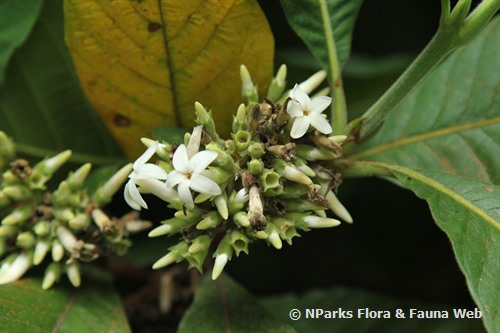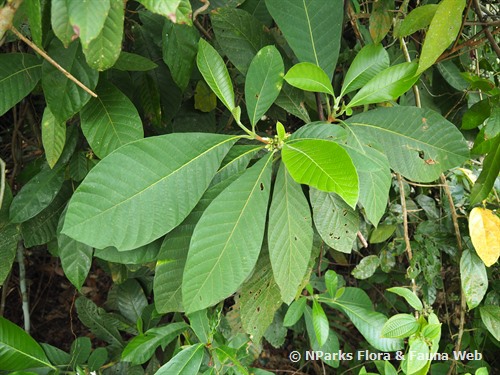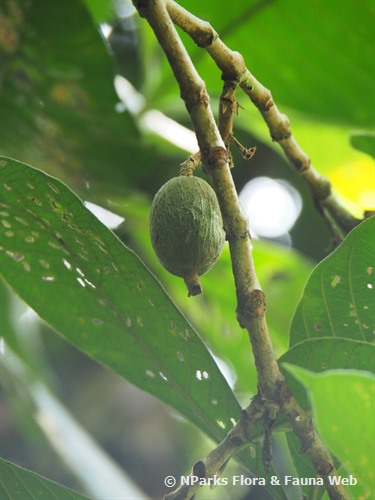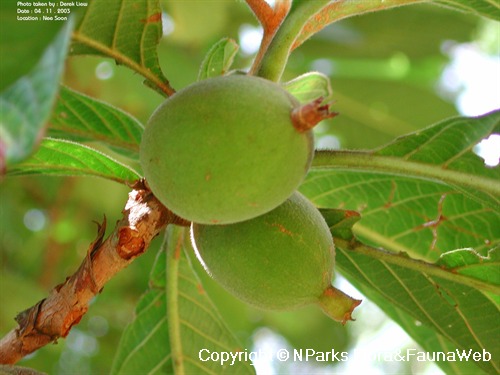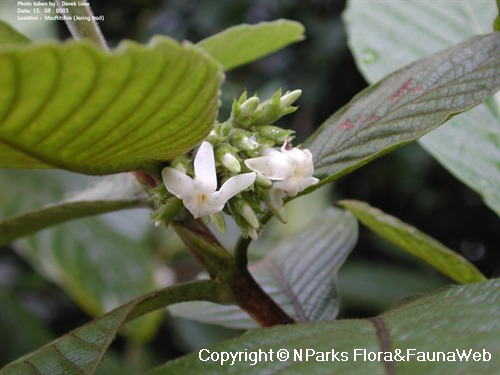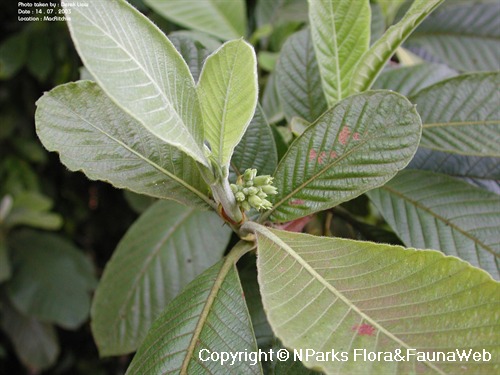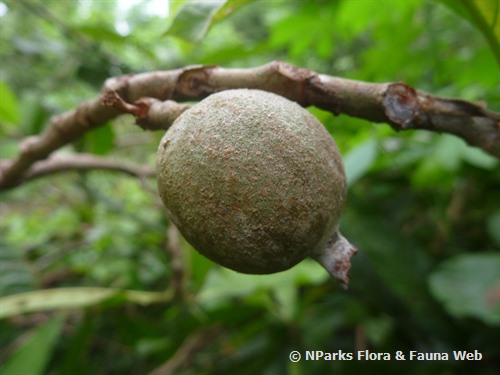
Back
Porterandia anisophylla (Jack ex Roxb.) Ridl.
| Family Name: | Rubiaceae |
| Synonyms: | Gardenia anisophylla Jack ex Roxb., Randia anisophylla (Jack ex Roxb.) Hook.f., Randia scortechinii King Gamble |
| Common Name: | Wild Randa, Randa Utan, Chempaka Puteh Utan, Tinjau Belukar, Ulai Ulai, Bongkal, Bungkal, Empulur Rimba, Jarum-jarum Rimba, Kemenang, Mempulur Rimba, Simpuh Gajah |
Name
Classifications and Characteristics
| Plant Division | Angiosperms (Flowering Seed Plants) (Dicotyledon) |
|---|---|
| Plant Growth Form | Tree (Medium (16m-30m)) |
| Lifespan (in Singapore) | Perennial |
| Mode of Nutrition | Autotrophic |
| Plant Shape | Irregular |
| Maximum Height | 18 m |
Biogeography
| Native Distribution | Sumatra, Malaysia, Singapore, and Borneo |
|---|---|
| Native Habitat | Terrestrial (Primary Rainforest, Secondary Rainforest, Freshwater Swamp Forest, Disturbed Area / Open Ground) |
| Preferred Climate Zone | Tropical |
| Local Conservation Status | Native to Singapore (Vulnerable (VU)) |
Description and Ethnobotany
| Growth Form | It is a small tree up to 18 m tall. The twigs, leaf-stalks, undersides of the leaf blades, and flowering clusters are covered with velvety hair. |
|---|---|
| Foliage | Its opposite, stalked leaves have almost leathery leaf blades that are broadly drop-shaped, with a short tip, 7.6–35 by 2.5–20 cm, and gradually tapered to the base. |
| Flowers | Its short-stalked flowering clusters are 3.8–6.4 cm wide. Each cluster bears few to many flowers, but only 1–4 of them bloom at a time. The white flowers are up to 2.5 cm wide. |
| Fruit | Its green fruits are broadly oblong, covered with short, velvety hair, up to 3.8 by 3.5 cm, and crowned by persistent calyx. |
| Habitat | It grows at forest edges, in open country and thickets, from the lowlands to about 1200 m altitude. |
| Associated Fauna | Its flowers are pollinated by insects. Its fruits are eaten by mammals. |
| Cultivation | It can be propagated by seed. |
| Etymology | Latin Porterandia, commemorating the early chief of the Penang Botanical Garden, G. Porter; Latin anisophyllus, with unequal leaves, referring to one pair of opposite leaves with one leaf being larger than the other |
| Ethnobotanical Uses | Timber & Products: The timber is used in building houses. |
Landscaping Features
| Landscaping | It is suitable for parks and streetscapes. |
|---|---|
| Desirable Plant Features | Ornamental Flowers, Ornamental Foliage |
| Landscape Uses | General, Suitable for Roadsides, Parks & Gardens |
Fauna, Pollination and Dispersal
| Pollination Method(s) | Biotic (Fauna) |
|---|---|
| Seed or Spore Dispersal | Biotic (Fauna) |
Plant Care and Propagation
| Light Preference | Full Sun |
|---|---|
| Water Preference | Moderate Water |
| Plant Growth Rate | Moderate |
| Rootzone Tolerance | Moist Soils, Well-Drained Soils, Fertile Loamy Soils |
| Propagation Method | Seed |
Foliar
| Foliage Retention | Evergreen |
|---|---|
| Mature Foliage Colour(s) | Green |
| Mature Foliage Texture(s) | Velvety / Furry / Tomentose, Leathery |
| Foliar Type | Simple / Unifoliate |
| Foliar Arrangement Along Stem | Opposite |
| Foliar Attachment to Stem | Petiolate |
| Foliar Shape(s) | Non-Palm Foliage (Obovate) |
| Foliar Venation | Pinnate / Net |
| Foliar Margin | Entire |
| Leaf Area Index (LAI) for Green Plot Ratio | 3.0 (Tree - Intermediate Canopy) |
Floral (Angiosperm)
| Flower & Plant Sexuality | Bisexual Flowers |
| Flower Colour(s) | White |
|---|---|
| Flower Grouping | Cluster / Inflorescence |
| Flower Location | Axillary |
| Flower Symmetry | Radial |
| Individual Flower Shape | Tubular |
Fruit, Seed and Spore
| Mature Fruit Colour(s) | Green - Light Green |
|---|---|
| Mature Fruit Texture(s) | Velvety / Furry / Tomentose |
| Fruit Classification | Simple Fruit |
| Fruit Type |
Image Repository
Others
| Master ID | 1805 |
|---|---|
| Species ID | 3098 |
| Flora Disclaimer | The information in this website has been compiled from reliable sources, such as reference works on medicinal plants. It is not a substitute for medical advice or treatment and NParks does not purport to provide any medical advice. Readers should always consult his/her physician before using or consuming a plant for medicinal purposes. |

